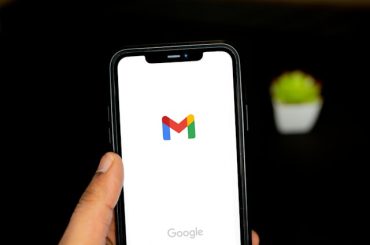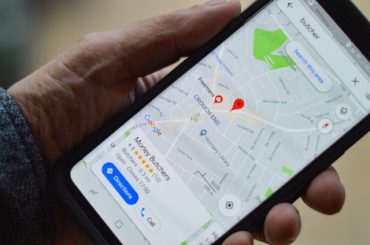Customer engagement strategies refer to tactics businesses use to encourage interactions and connections between consumers and their brands. These interactions can occur over different platforms and through various media types. Effective customer engagement strategies can increase brand loyalty, sales, and word-of-mouth marketing.
Here are several strategies to improve customer engagement:
Personalization
Personalization as a customer engagement strategy involves tailoring your brand’s interactions and offerings to individual customers based on their preferences, behavior, and purchase history. The goal is to make customers feel understood and catered to, enhancing their connection with your brand. This can increase engagement, loyalty, and, ultimately, sales.
Here’s a deeper look into how personalization can be used as a customer engagement strategy:
- Product Recommendations: Businesses can offer tailored product or service recommendations by leveraging customers’ purchase history and browsing behavior. For instance, if customers often buy crime novels from an online bookstore, they could receive recommendations for similar books they haven’t bought yet.
- Personalized Communication: This can range from using the customer’s name in emails to tailoring the entire communication based on their interests and past interactions and, for instance, sending an email about a discount on a previously browsed item or wishing them their birthday.
- Personalized Experiences: Websites or apps can be personalized to improve user experience. This could involve highlighting certain product categories based on the visitor’s browsing history or showing personalized content upon login.
- Tailored Marketing: Personalization can also enhance your marketing efforts. For example, showing targeted ads to individuals based on their past purchases or browsing history.
- Customer Segmentation: Customers can be divided into different segments based on their behavior, demographics, or purchase history. Then, personalized marketing campaigns can be created for each segment.
- Dynamic Content: This involves displaying different content to different users based on their characteristics or behavior. For instance, a weather app shows localized forecasts, or a news website offers stories based on the reader’s interests.
Implementing personalization in your customer engagement strategy requires careful planning and robust data collection and analysis capabilities. Privacy concerns must also be considered – always ensure customers’ data is handled securely and transparently and that they understand how their data is being used.
Customer Intimacy Strategy: Meaning & Examples
Omni-Channel Experience
Omni-channel experience as a customer engagement strategy provides seamless and consistent interaction across all channels where your business has a presence. This includes physical locations, websites, social media platforms, mobile apps, email marketing, and customer service channels. The goal is to create a unified brand experience for customers, no matter how or where a customer reaches out.
Here’s how an omnichannel experience can enhance customer engagement:
- Consistent Brand Messaging: Ensure your branding, marketing messages, and overall communication remain consistent across all channels. This helps reinforce your brand identity and makes it easier for customers to recognize and trust your brand.
- Seamless Shopping Experience: If a customer starts their shopping journey on one platform, they should be able to continue it on another without any hitches. For example, if customers add items to their shopping cart on your website, they should still be there if they switch to your mobile app.
- Unified Customer Service: Regardless of whether a customer contacts your customer service team via email, phone, live chat, or social media, the quality and speed of service should be the same. Moreover, the customer’s history should be accessible from all channels so they don’t have to repeat their issue if they switch channels.
- Cross-Channel Integration: Each channel should be integrated for a seamless experience. For instance, customers should be able to check in-store availability on your website or return an online purchase at a physical store.
- Data Integration: Data from all channels should be consolidated to provide a comprehensive view of the customer journey. This helps you understand your customers better and personalize their experience across all channels.
- Channel-Specific Optimization: While consistency is important, each channel should also be optimized for its unique features and user expectations. For instance, the mobile experience should be optimized for smaller screens and touch inputs, while the in-store experience should leverage the advantages of face-to-face interaction.
Implementing an omnichannel strategy can be complex, as it involves integrating multiple systems and processes and ensuring consistency and data synchronization across all of them. However, it can significantly enhance customer engagement, satisfaction, and loyalty, making it a worthwhile investment.
High-Quality Content
High-quality content is an effective strategy for engaging customers, building trust, and driving loyalty. It refers to content that provides value to the consumer by being informative, entertaining, engaging, and relevant to their needs or interests.
Here’s how high-quality content can enhance customer engagement:
- Blog Posts: Regular blog posts that cover topics related to your business can attract and engage customers. They can provide useful information, advice, or insights your customers appreciate, making them more likely to return to your site and trust your brand.
- Videos: Video content is highly engaging and can convey a lot of information in a short time. Product demonstrations, tutorials, behind-the-scenes looks, interviews, and customer testimonials can all be valuable types of video content.
- Infographics: These can be an engaging way to present data or explain complex topics in a visual and easy-to-understand format.
- Email Newsletters: Regular newsletters can inform your customers about your business, provide valuable content, and encourage them to engage with your brand.
- Webinars or Podcasts: These formats can provide deep dives into topics of interest, give customers access to expert insights, or cover recent trends or news. They can help position your brand as an authority in your field.
- Ebooks or Guides: These in-depth resources can provide value to customers, helping them solve problems or learn more about topics they care about.
- Social Media Content: From quick tips and news updates to contests and user-generated content, social media can be an excellent platform for engaging content.
- User-Generated Content: Encouraging your customers to create content related to your brand, such as reviews, testimonials, or pictures of them using your products, can develop a sense of community and trust.
Producing high-quality content requires understanding your audience’s needs and interests, being consistent in your messaging and brand voice, and regularly reviewing and updating your content strategy based on feedback and analytics.
Remember that the aim of content marketing isn’t just to promote your products or services but to provide real value to your audience. This builds trust and goodwill, making customers more likely to choose your brand when they’re ready to purchase.
Social Media Engagement
Social media engagement involves interacting with customers on various social media platforms. This could be through likes, shares, comments, direct messages, tags, etc. As a customer engagement strategy, social media allows businesses to reach out to customers more personally, relaxed, and interactively.
Here’s a deeper look into how social media can be used as a customer engagement strategy:
- Create and Share Engaging Content: Regularly post high-quality, relevant content that your followers will find valuable or entertaining. This could be in the form of images, videos, infographics, blogs, news updates, and more. Encouraging users to share your content can also help increase reach and engagement.
- Prompt Conversation: Post content encouraging users to interact, such as asking questions, conducting polls, or posting user-generated content. Responding to comments and joining the conversation can make your brand seem more approachable and personable.
- Customer Support: Social media can be a powerful tool for quickly responding to customer queries and complaints. Prompt, helpful responses can significantly enhance customer satisfaction and loyalty.
- Community Building: Social media allows you to build a community around your brand. Regular interaction, sharing user-generated content, or creating groups or forums where users can interact with each other can foster a sense of community.
- Influencer Collaborations: Collaborating with influencers with a strong following in your industry can help you reach a larger audience and increase engagement.
- Social Media Advertising: Most social media platforms have sophisticated advertising systems that allow you to target specific demographics, improving the relevance of your ads and increasing engagement.
- Contests and Giveaways: These can encourage interaction and shares, increasing engagement and spreading awareness of your brand.
- Monitor and Respond: Keep an eye on what’s being said about your brand on social media, and respond where appropriate. This could involve handling complaints, thanking customers for positive feedback, or joining discussions related to your industry.
Implementing a successful social media engagement strategy requires a deep understanding of your audience, including which platforms they use, what type of content they prefer, and how they like to interact. Regularly monitoring and adjusting your strategy based on analytics and feedback is also crucial.
Rewards and Loyalty Programs
Rewards and loyalty programs are powerful customer engagement strategies that incentivize customers to engage with a brand repeatedly. They’re designed to motivate customers to choose your brand over competitors by offering rewards for repeat purchases or other forms of engagement.
Here’s how rewards and loyalty programs can enhance customer engagement:
- Points-Based Systems: The most common type of loyalty program, where customers earn points for each purchase, which can be redeemed for discounts, freebies, or special items. This encourages customers to make more purchases to earn more points.
- Tiered Programs: These programs offer different levels of rewards based on the customer’s level of spending. The higher the tier, the better the rewards, motivating customers to spend more to reach higher tiers.
- Cash Back: This program offers customers a percentage of their money back after they’ve spent a certain amount. The cashback can be used on future purchases.
- Membership Programs: These programs require customers to pay a fee to join, but members receive exclusive benefits like free shipping, special discounts, early access to products, or premium support.
- Referral Programs: Customers are incentivized to refer friends or family to the business. When their referrals make a purchase, the referring customer receives a reward.
- Non-Monetary Rewards: Not all rewards have to be monetary or transactional. Recognition, exclusive content, or experiential rewards can also be highly motivating.
- Gamification: Incorporating game elements, like challenges or competitions, into your loyalty program can make it more engaging and fun.
- Personalized Rewards: Tailoring rewards to individual customers’ preferences or past purchases can make them feel more valued and understood.
Successful rewards and loyalty programs require careful planning and regular evaluation. It’s important to ensure that the rewards are attractive to your customers and that the program is easy to understand and use. You should also clearly communicate the program’s benefits to your customers and regularly remind them of their progress and available rewards.
Remember that the goal of these programs isn’t just to incentivize purchases but to build a stronger relationship with your customers, making them feel appreciated and valued by your brand.
Customer Support and Service
Customer support and service play a vital role in engaging and retaining customers. It involves helping customers resolve issues, answering their queries, and guiding them in using a product or service. Excellent customer support and service can significantly enhance customer satisfaction, loyalty, and word-of-mouth referrals.
Here’s how customer support and service can be used as a customer engagement strategy:
- Quick Response Time: The quicker your response to customer queries, the better your customer engagement. This helps customers feel that their issues are a priority.
- Multiple Channels: Offering support across multiple channels – like email, phone, live chat, social media, and FAQ sections on your website – gives customers the freedom to choose the most convenient method.
- 24/7 Support: With the growth of online shopping, customers may need support anytime. Offering 24/7 support, possibly with the help of AI chatbots, can significantly enhance customer satisfaction and engagement.
- Knowledgeable Support Team: Ensure your customer support team is well-trained and knowledgeable about your products or services. They should be able to resolve issues efficiently and provide accurate information.
- Personalized Service: Personalizing your customer service can make customers feel valued and understood. This could involve using their name, knowing their purchase history, or tailoring solutions to their individual needs.
- Proactive Support: Don’t wait for customers to come to you with issues. Regularly reaching out to ask if they need help, or providing valuable tips and information, can prevent issues from arising and enhance customer engagement.
- Follow Up: After resolving a customer’s issue, follow up to ensure they’re satisfied with the solution and to ask if they need further assistance. This shows customers that you care about their experience.
- Collect and Implement Feedback: Encourage customers to provide feedback on your support service and implement changes based on this feedback. This can continuously improve customer service and show customers you value their opinion.
Remember that excellent customer support and service isn’t just about resolving issues and creating a positive experience that makes customers feel valued and appreciated. This can turn a potentially harmful experience into a positive one, enhancing customer loyalty and engagement.
Service strategy: Explained with Examples
User-Generated Content
User-generated content (UGC) is any type of content – such as images, videos, text, and reviews – created by users or customers of a brand rather than the brand itself. Leveraging UGC as part of a customer engagement strategy can provide social proof, develop a sense of community, and offer fresh, authentic content that can be used across various marketing channels.
Here’s how user-generated content can enhance customer engagement:
- Social Proof: Seeing content created by other customers can give potential buyers confidence in your brand or products. This is especially true for online reviews and testimonials.
- Community Building: UGC can foster a sense of community around your brand. Encouraging users to share their experiences or ideas can make them feel more connected to your brand and each other.
- Content Variety: UGC can provide fresh, diverse content that can be shared on your social media channels, website, emails, and more. This can keep your content interesting and engaging.
- Engagement Boost: When users create content for your brand, they will likely share it with their networks, increasing reach and engagement.
- Contests and Challenges: Encouraging UGC through contests or challenges can increase engagement. For instance, you might ask customers to share a photo of them uniquely using your product, with the best entry winning a prize.
- Product Development: UGC can provide valuable feedback and ideas for product development. For instance, customers might share ways they’ve found to use your product that you hadn’t considered.
- Personalization: By showcasing UGC, you demonstrate that you value your customers’ individual experiences and perspectives, which can enhance personalization and connection.
When leveraging UGC, it’s important to always request permission before using someone’s content and to give credit to the original creator. This respects their rights and fosters goodwill. Monitoring UGC to ensure it aligns with your brand values and guidelines is also crucial.
Interactive Experiences
Interactive experiences refer to initiatives involving active participation or customer engagement. They allow customers to interact with the brand on a more personal and immersive level, which can lead to a deeper relationship and stronger loyalty.
Here’s how interactive experiences can be used as a customer engagement strategy:
- Interactive Content: This includes quizzes, polls, surveys, calculators, and interactive infographics or videos. They can engage customers and gather valuable information about their preferences or needs.
- Virtual Reality (VR) or Augmented Reality (AR): These technologies can provide highly immersive experiences. For example, a furniture store might offer an AR app that allows customers to visualize how a piece of furniture would look in their home.
- Gamification: Incorporating game elements into your customer experience, such as competitions, challenges, points, badges, or leaderboards, can make engagement more fun and rewarding.
- Live Events: Webinars, live streams, or Q&A sessions can provide real-time interaction with your brand. They can be used to provide valuable information, showcase new products, or answer customer questions.
- Interactive Emails: Rather than just providing information, emails can also be interactive. For instance, they might include a quiz, a clickable infographic, or an embedded video.
- Personalization Tools: Offering tools that allow customers to personalize your product or service can create a more engaging and memorable experience. For example, a clothing store might offer an online tool that lets customers design their t-shirts.
- Chatbots and AI Assistants: These can provide interactive support or guidance, helping customers find information, answer questions, or complete tasks.
- User-Generated Content: Encouraging customers to create and share their own content, such as reviews, photos, or ideas, can foster interaction and engagement.
Creating interactive experiences can require more effort and resources than traditional, passive forms of marketing. However, they can significantly enhance customer engagement, satisfaction, and loyalty, making them a worthwhile investment. It’s important to ensure that any interactive experience is easy to use, genuinely engaging and provides real value to the customer.
Data-Driven Approach
A data-driven approach to customer engagement involves using customer data to guide decisions about engaging with them. This can lead to more effective and personalized engagement strategies, as they’re based on actual customer behaviors, preferences, and feedback rather than assumptions.
Here’s how a data-driven approach can be used as a customer engagement strategy:
- Personalization: Data can help you understand each customer’s preferences, needs, and behaviors, allowing you to tailor your communication and offers to each individual. This can make your engagement more relevant and effective.
- Segmentation: Data can be used to group your customers into different segments based on factors like demographics, purchase history, browsing behavior, and more. You can then tailor your engagement strategies to each segment.
- Predictive Analysis: By analyzing historical data, you can predict future behaviors, such as when a customer is likely to make a purchase, which products they might be interested in, or when they might need support.
- Customer Journey Mapping: Data can help you understand the path customers take from discovering your brand to purchasing and beyond. This can help you identify key engagement touchpoints and potential improvement areas.
- A/B Testing: By testing different versions of your engagement strategies on different subsets of your customers, you can see which performs better and make data-driven decisions about which to implement more widely.
- Feedback Analysis: Data from customer feedback can provide valuable insights into what customers like and dislike about your brand, helping you make improvements and engage more effectively.
- Data Visualization: Using tools to visualize your data can make it easier to understand and draw insights from. This can help guide your engagement strategy.
A data-driven approach requires collecting, analyzing, and interpreting customer data. This can require investment in data analytics tools and skills. It’s also important to handle customer data responsibly and ensure privacy and compliance with regulations.
Remember that while data can provide valuable insights, it should be used to enhance, not replace, a human understanding of your customers. Combining data with empathy and creativity can lead to the most effective engagement strategies.
Email Marketing
Email marketing continues to be one of the most effective ways to engage customers. It allows businesses to maintain regular contact with their customers, keep them informed, promote products or services, and build long-term relationships.
Here’s how email marketing can be used as a customer engagement strategy:
- Personalized Emails: Use customer data to personalize your emails. This could include using the customer’s name, referencing past purchases, or tailoring the content to their preferences or behaviors.
- Segmented Email Campaigns: Divide your email list into segments based on demographics, purchase history, or engagement level. You can tailor your emails to each segment for more relevant and effective communication.
- Newsletters: Regular newsletters can keep customers informed about your business, products, or industry. They can provide valuable or entertaining content that engages customers and keeps your brand top of mind.
- Promotional Emails: Email can be used to promote new products, sales, or special offers. Personalizing these promotions based on the customer’s past purchases or behaviors can increase their relevance and effectiveness.
- Transactional Emails: These emails are triggered by a customer’s action, like a purchase confirmation or account update. While their primary purpose is informational, they can also be used to engage customers by recommending related products or asking for a review.
- Re-engagement Emails: If a customer hasn’t interacted with your brand in a while, a re-engagement email can remind them of your value and encourage them to return. This could offer a special discount, highlight new products, or simply check-in and ask for feedback.
- Mobile Optimization: Ensure your emails look good and function well on mobile devices, as many customers will check their email on their phones.
- Testing and Analytics: Regularly test different aspects of your emails, like the subject line, design, content, or send time, to see what works best. Use analytics to measure your performance and guide your email marketing strategy.
Effective email marketing requires understanding your customers, delivering valuable and personalized content, and maintaining a respectful and permission-based relationship. Remember to comply with email marketing laws, such as obtaining permission to send emails and including an option to unsubscribe.











